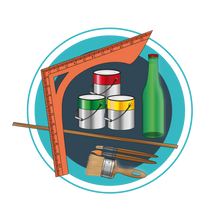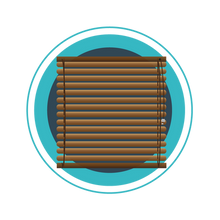Clogs Making

About Clogs Making
A pair of clogs has been treasured as a basic human need and is considered a unisex product. Known either as Chinese Wooden Clog or Wooden Clog (for short), back in the day, they were commonly worn as outdoor footwear. “My mother-in-law used to wear clogs to restaurants…” says Madam Yeow (a clog maker based in Ipoh) who witnessed the commonality of wearing clogs outdoors about 40 to 50 years ago. Later, with the enlargement of the base design, it then gained popularity being worn in the kitchen and garden. According to Madam Yeow, the functional benefits of wearing clogs is to keep one’s feet dry and avoid oily and slippery floors. Technically, the pair of clogs has no left or right sides and can be worn interchangeably. The base of the clog has two simple designs i.e. with or without curves and comes in different sizes. Ingeniously, the strap of the clog is measured purely by sight to fit one’s feet size.
Traditionally, clogs can be found in many different colors. The base was colorfully painted and commonly adorned with many different floral illustrations by the sellers/producers. Black color clogs was favoured by the Ma Jie (马姐) while red was common for matrimonial ceremonies. The base is made from durian tree trunks as they are hardy and can remain dry, which is why it remains an unchanged material of choice for the base till today. This wisdom in its design reflects the economical value of sustainability where the clogs is known for its long lasting durability. In the old days, an axe was used to shape, split and cut the tree trunk to make the base. This process has since been replaced by machines. However, this mass production cannot rival the intricate man made finishing touches such as sanding, planing, painting and nailing the base and strap to make it a wearable clog. The base comes in two simple designs, with or without identifiable shape while the painting of the base also depends on the clog maker’s creativity. While the height of the base does not possess any significant meaning, however, compared to a modern pair of slippers it displays superior durability.



For more than 50 years since its creation, atomic leather cloth (原子皮) imported from Hong Kong was the material of choice for the clog straps and was commonly favoured in black color by the Ma Jie(s) (马姐) of that time. Although the straps were black, floral patterns were also commonly designed on the leather cloth. Later, the atomic leather cloth was replaced by atomic cloth material commonly found inside tyres, where the atomic cloth was pressed with the other layers into a single piece. However, this process proved difficult to extract and its resulting product unsafe for the feet. Hence, due to safety concerns and the scarcity of the material, it was gradually replaced by plastic. “Traditional clogs were illustrated with more colorful and stunning designs compared to the clogs made today”, says Madam Yeow. According to her, clogs however are a rare sight today due to its lack of popularity attributed to the harsh clunking sound from its friction on modern ceramic tiles.
" This is my life, and this is what I will do for the rest of my life"
- Madam Yeow
.jpg)
Process of Clogs Making
STEP 1: AXE THE BASE
In its early design, the base of the clogs is shaped with an axe. Now, machine manufacturing has taken over this process according to design specifications. The shape of the base has been simplified (with or without a curve). However, the finishing touches are still perfected by the craftsman to ensure the surface is in good wearable condition
STEP 2: PAINT THE BASE
The base of the clog is painted twice to ensure its quality and beauty. In the past, shellac mixed with color powder were the color materials for the base. Now, it is replaced with paint color due to the high cost of shellac and scarcity of color powder.
STEP 3: ADJUST THE SIZE
The base of the clog can be designed in different sizes. However, the comfort of its wearer is determined by the strap used. Before nailing the strap to the base, the craftsman will measure and adjust the tightness according to the customer's feet purely by sight.
STEP 4: COMBINE THE STRAP AND BASE
After the strap is nailed onto the base, the finished product is ready.














